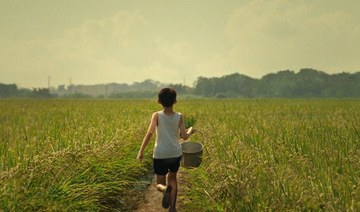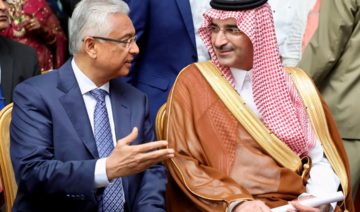NEW YORK: Shaina Taub was in the audience at “Suffs,” her buzzy and timely new musical about women’s suffrage, when she spied something that delighted her.
It was intermission, and Taub, both creator and star, had been watching her understudy perform at a matinee preview last week. Suddenly, she saw audience members searching the Wikipedia pages of key figures portrayed in the show: women like Ida B. Wells, Inez Milholland and Alice Paul, who not only spearheaded the suffrage fight but also wrote the Equal Rights Amendment ( still not law, but that’s a whole other story).
“I was like, that’s my goal, exactly that!” Taub, who plays Paul, said from her dressing room later. “Do everything I can to make you fall in love with these women, root for them, care about them. So that was a really satisfying moment to witness.”
Satisfying but sobering, too. Fact is, few audience members know much about the American suffrage movement. So the all-female creative team behind “Suffs,” which had a high-profile off-Broadway run and opens Thursday on Broadway with extensive revisions, knows they’re starting from zero.
It’s an opportunity, says Taub, who studied social movements — but not suffrage — at New York University. But it’s also a huge challenge: How do you educate but also entertain?
One member of the “Suffs” team has an especially poignant connection to the material. That would be producer Hillary Clinton.
She was, of course, the first woman to win the US presidential nomination of a major party, and the first to win the popular vote. But Clinton says she never studied the suffrage movement in school, even at Wellesley. Only later in life did she fill in the gap, including a visit as first lady to Seneca Falls, home to the first American women’s rights convention some 70 years before the 19th Amendment gave women the vote.
“I became very interested in women’s history through my own work, and writing and reading,” Clinton told The Associated Press. And so, seeing “Suffs” off-Broadway, “I was thrilled because it just helps to fill a big gap in our awareness of the long, many-decades struggle for suffrage.”
It was Taub who wrote Clinton, asking her to come on board. “I thought about it for a nanosecond,” Clinton says, “and decided absolutely, I wanted to help lift up this production.” A known theater lover, Clinton describes traveling often to New York as a college student and angling for discounts, often seeing only the second act, when she could get in for free. “For years, I’d only seen the second act of ‘Hair,’” she quips.
Clinton then reached out to Malala Yousafzai, whom Taub also hoped to engage as a producer. As secretary of state, Clinton had gotten to know the Pakistani education activist who was shot by a Taliban gunman at age 15. Clinton wanted Yousafzai to know she was involved and hoped the Nobel Peace Prize winner would be, too.
“I’m thrilled,” Clinton says of Yousafzai’s involvement, “because yes, this is an American story, but the pushback against women’s rights going on at this moment in history is global.”
Yousafzai had also seen the show, directed by Leigh Silverman, and loved it. She, too, has been a longtime fan of musicals, though she notes her own acting career began and ended with a school skit in Pakistan, playing a not-very-nice male boss. Her own education about suffrage was limited to “one or two pages in a history book that talked about the suffrage movement in the UK,” where she’d moved for medical treatment.
“I still had no idea about the US side of the story,” Yousafzai told the AP. It was a struggle among conflicting personalities, and a clash over priorities between older and younger activists but also between white suffragists and those of color — something the show addresses with the searing “Wait My Turn,” sung by Nikki M. James as Wells, the Black activist and journalist.
“This musical has really helped me see activism from a different lens,” says Yousafzai. “I was able to take a deep breath and realize that yes, we’re all humans and it requires resilience and determination, conversation, open-mindedness … and along the way you need to show you’re listening to the right perspectives and including everyone in your activism.”
When asked for feedback by the “Suffs” team, Yousafzai says she replied that she loved the show just as it was. (She recently paid a visit to the cast, and toured backstage.) Clinton, who has attended rehearsals, quips: “I sent notes, because I was told that’s what producers do.”
Clinton adds: “I love the changes. It takes a lot of work to get the storytelling right — to decide what should be sung versus spoken, how to make sure it’s not just telling a piece of history, but is entertaining.”
Indeed, the off-Broadway version was criticized by some as feeling too much like a history lesson. The new version feels faster and lighter, with a greater emphasis on humor — even in a show that details hunger strikes and forced feedings.
One moment where the humor shines through: a new song titled “Great American Bitch” that begins with a suffragist noting a man had called her, well, a bitch. The song reclaims the word with joy and laughter. Taub says this moment — and another where an effigy of President Woodrow Wilson (played by Grace McLean, in a cast that’s all female or nonbinary) is burned — has been a hit with audiences.
“As much as the show has changed,” she says, “the spine of it is the same. A lot of what I got rid of was just like clearing brush.”
Most of the original cast has returned. Jenn Colella plays Carrie Chapman Catt, an old-guard suffragist who clashed with the younger Paul over tactics and timing. James returns as Wells, while Milholland, played by Phillipa Soo off-Broadway, is now played by Hannah Cruz.
Given its parallels to a certain Lin-Manuel Miranda blockbuster about the Founding Fathers, it’s perhaps not a surprise that the show has been dubbed “Hermilton” by some.
“I have to say,” Clinton says of Taub, “I think she’s doing for this part of American history what Lin did for our founders — making it alive, approachable, understandable. I’m hoping ‘Suffs’ has the same impact ‘Hamilton’ had.”
That may seem a tall order, but producers have been buoyed by audience reaction. “They’re laughing even more than we thought they would at the parts we think are funny, and cheering at other parts,” Clinton says.
A particular cheer comes at the end, when Paul proposes the ERA.
“A cast member said, ‘Who’d have ever thought the Equal Rights Amendment would get cheers in a Broadway theater?’” Clinton recalls.
One clear advantage the show surely has: timeliness. During the off-Broadway run, news emerged the Supreme Court was preparing to overturn Roe vs. Wade, fueling a palpable sense of urgency in the audience. The Broadway run begins as abortion rights are again in the news — and a key issue in the presidential election only months away.
Taub takes the long view. She’s been working on the show for a decade, and says something’s always happening to make it timely.
“I think,” she muses, “it just shows the time is always right to learn about women’s history.”
‘Suffs’ musical with Malala, Hillary as producers has timing on its side
https://arab.news/jzxp5
‘Suffs’ musical with Malala, Hillary as producers has timing on its side
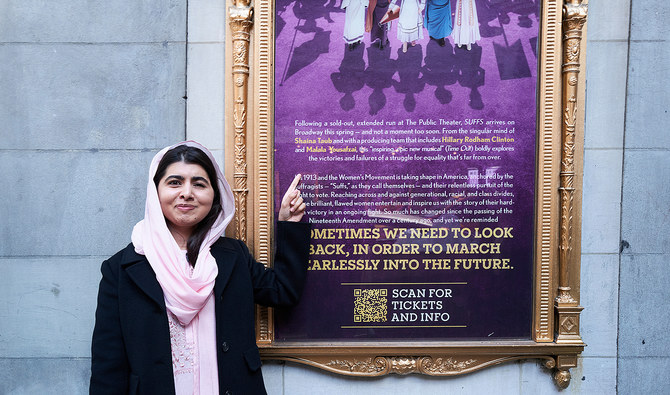
- ‘Suffs’ is a Broadway musical that focuses on the American women’s suffrage movement
- Pakistani Nobel laureate says musical helped her see her activism from a “new lens“
Saudi Film Festival ends with honors for best production, music, acting
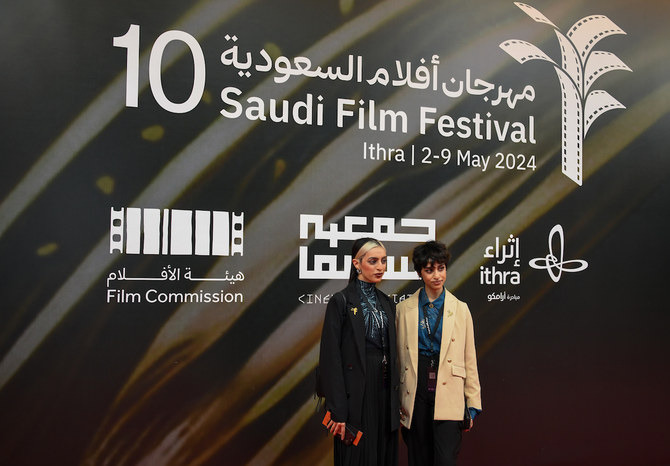
- Kingdom’s acclaimed wildlife documentary ‘Horizon’ and film ‘Hajjan’ win top awards
DHAHRAN: The red carpet was rolled out on the final night of the eight-day 10th Saudi Film Festival on Thursday with awards handed out for best production, music and acting.
The event, held at King Abdulaziz Center for World Culture, or Ithra, had included masterclasses, workshops, book signings and networking opportunities.

The closing ceremony was a glamorous event, as presenters handed out the Golden Palm awards on stage.
Of the 76 films that were screened, 53 titles competed for 36 awards.

The acclaimed 2024 wildlife documentary “Horizon” won in its category. It was produced by the Konoz Initiative in collaboration with the Ministry of Media’s Center for Government Communication and the National Center for Wildlife.
Ithra’s own award-winning “Hajjan,” about a young camel rider, won for best music, best actor for the young star Omar Alatawi, and best actress for Tulin Essam. The film also won the Jury Golden Palm.

One of the big winners on the night was the documentary shown at the opening ceremony of the festival on May 2, “Underground,” about the music scene in Saudi Arabia.
The list of winners and the recorded stream are available on the Ithra website.
Highlights from the Middle East Institute’s ‘Louder Than Hearts’ in Washington DC
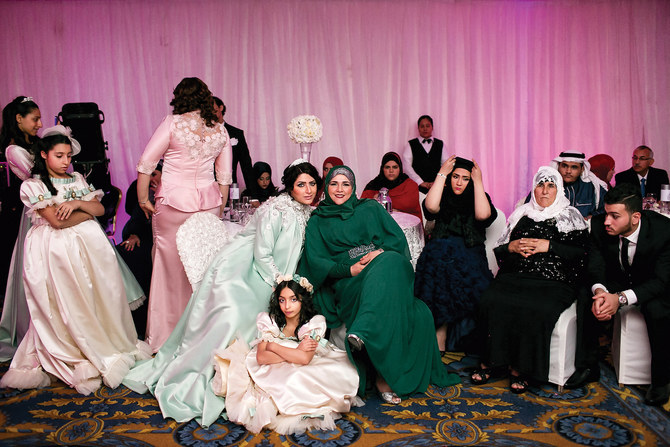
DUBAI: The Middle East Institute in Washington DC is hosting works by female photographers from the Arab world.
Tasneem Al-Sultan
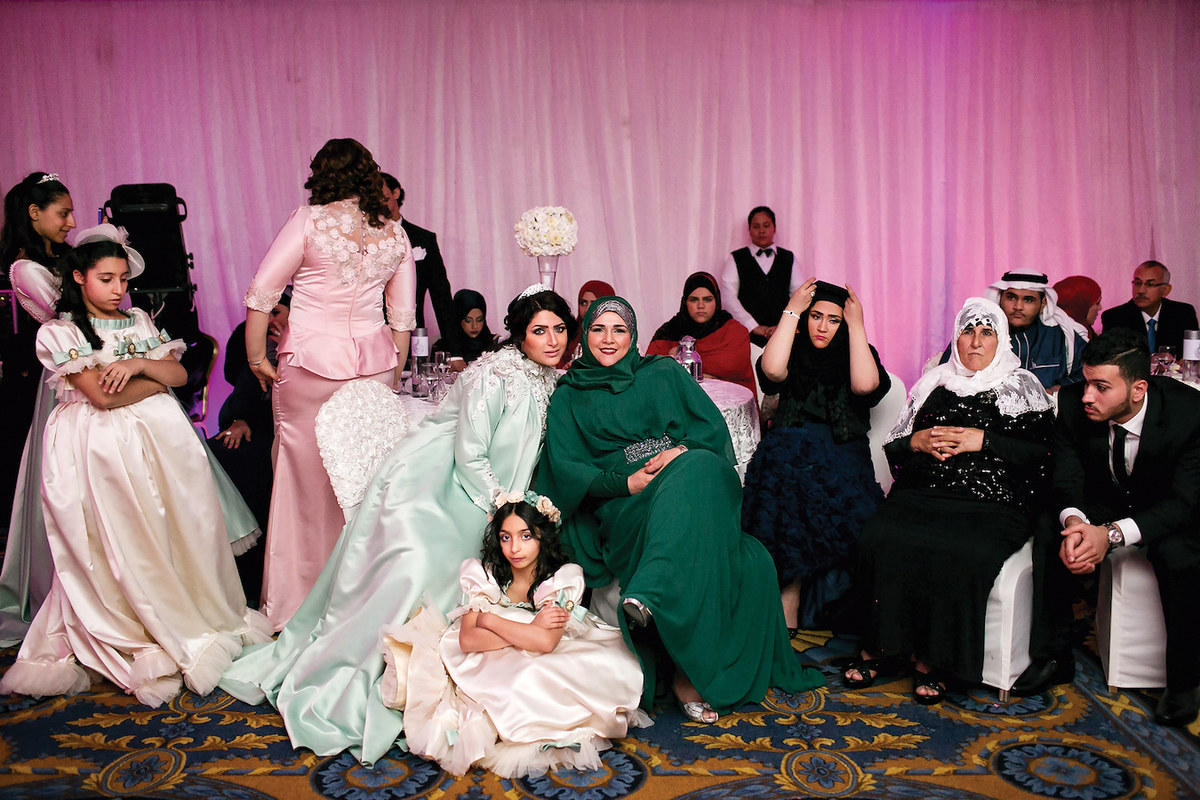
‘Diversity Within Saudi Weddings’
The acclaimed Lebanon-born Palestinian-American photographer Rania Matar has curated “Louder Than Hearts,” an exhibition of work by 10 female photographers, including herself, from the Arab world and Iran that runs at the Middle East Institute in Washington DC until October 4. Saudi Arabia is represented by Riyadh-based “visual storyteller and photographer” Tasneem Al-Sultan, specifically her “Saudi Tales of Love” series, which, the MEI says, is “informed by her personal journey through marriage and divorce.”
In wedding images such as this one, Al-Sultan “depicts the constructs and expectations of marriage, including the elaborate ceremonies, as well as the various societal constraints the Saudi women she photographed faced and triumphed over” and “delves into the complexities of relationships and the interplay of tradition and individual choice.”
The series has garnered global recognition for Al-Sultan, featuring in Time’s “Lightbox” photo series and the international photography fair Paris Photo.
Rania Matar

‘Farah (In Her Burnt Car)’
Matar’s photography, the MEI states, “captures intimate moments that transcend borders and cultures and explores themes of personal and collective identity through photos of women in the US and the Middle East.”
The series to which this image belongs — “Where Do I Go? Fifty Years Later” — began after the devastating explosion in Beirut Port in August 2020, and the title alludes to the fact that 2025 will be the 50th anniversary of the beginning of Lebanon’s civil war. The wave of emigration that followed the 2020 explosion was “akin to that of 1984-85 when a wave of young people including herself left the war-stricken country. By photographing these women, Matar was relating to their experiences and their dilemma of immigration (decades) later.”
Rehaf Al-Batniji

‘Malak’
This image comes from Paris-based, Gaza-born photographer Al-Batniji’s series titled “(Shatt) The Beach & (Shatta) The Chili Pepper,” a project that explores “the social and cultural anthropology” of her hometown. Shatta is a major ingredient in Palestinian cuisine, and “emblematic of Gaza, where life’s challenges can sting like this fiery spice,” while shatt is “the serene beach where residents seek solace and escape their daily reality.”
Al-Batniji’s work, the MEI states, “offers an intimate portrayal of the territory, reflecting the struggles and intensity of life under siege, as well as the resilience and vibrancy of its communities with refreshing hopefulness. Al-Batniji rejects the brutal imagery of conflict and instead uses color as a tool of resistance.”
Carmen Yahchouchi

‘Victoria’
Mali-born Lebanese photographer Yahchouchi has work from three of her series in the exhibition, all of which “capture the enduring impact of the Lebanese Civil War on women, highlighting their pivotal roles in the middle of chaos and devastation,” the MEI’s promotional material states. “Her work offers glimpses into their resilience, strength and sacrifice as they navigated through tumultuous periods of history emerging as heroines within their communities and families and assuming new roles in the public sphere.” This piece is from her series “My Mother’s Gun,” and demonstrates Yahchouchi’s talent for photographing “the intimate spaces of human experience, inviting viewers into her subjects' unique worlds.”
Tanya Habjouqa

‘Inner Resistance’
The Jordanian photographer and journalist, who lives and works in East Jerusalem, “melds a mordant sense of irony with an unyielding examination of the repercussions of geopolitical conflicts on people’s lives,” according to the MEI. This image comes from her “Occupied Pleasures” series, which, the institute says, “presents a multidimensional portrayal of humanity’s ability to find joy amid adversity in the West Bank, Jerusalem, and Gaza, utilizing a sharp sense of humor about the absurdities produced by a 47-year occupation.”
Film Review: ‘Mother’s Instinct,’ a psychological thriller that keeps you guessing until the end
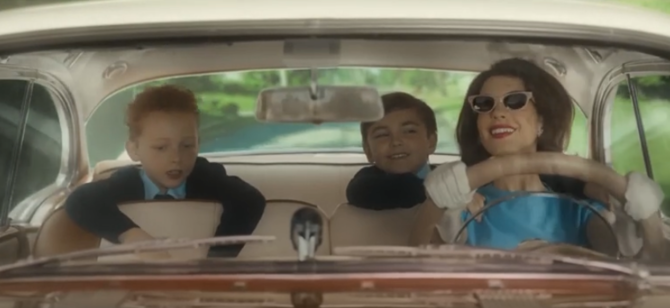
- Anne Hathaway plays "the perfect mother" in this 2024 psychological thriller in a remake of a French film, which itself was a novel adaptation
Anne Hathaway has played many roles over the course of her career: a surprise princess, an assistant to a fashion magazine editor, a recovering addict, Cat Woman. In “Mother’s Instinct,” she plays a mother — the perfect mother.
In this 2024 psychological thriller — a remake of a French film which itself was a novel adaptation — Hathaway is joined by Jessica Chastain. The two play best friends who are living the American dream.
They are next-door neighbors. Their husbands are the best of friends, as are their eight-year-old sons. They live in an affluent neighborhood in cookie-cutter 1960s’ suburban America. Everything seems idyllic.
The film begins with Celine’s (Hathaway) birthday. Alice (Chastain) and the women’s husbands throw a surprise backyard party. Celine receives a pearl necklace, a joint gift from their family and friends. It’s a wonderful celebration.
But the next day, there’s a tragic death.

One of the young boys falls from a balcony under suspicious circumstances. At the time, he was being supervised by the other mother.
The film forces us to ask: How can a mother live with herself after she entrusted her son’s life to her friend? Could anyone forgive themselves? Could they forgive their friend?
By mid-film, there are still two mothers — but now one is childless. The one whose son has survived feels guilt. The one who lost her boy feels fury. Both feel grief.
As the story unfolds there are more deaths and we begin to wonder: Did one mother deliberately harm the other’s son? Who is innocent here? Who is evil? Was it an accident or a deliberate act? And who will die next?
Events become more sinister. Nothing seems perfect anymore. Even the beautiful pearl necklace ends up broken on the floor, the tiny gems rolling around chaotically.
First-time director Benoit Delhomme does a good job of leading our eyes where he wants them to go. The cinematography is beautiful, while the styling and outfits are divine.
This film keeps you guessing until the end. And there is no happy ending; sometimes, the happy ending is that there is one at all.
US animation lights up Saudi Film Festival
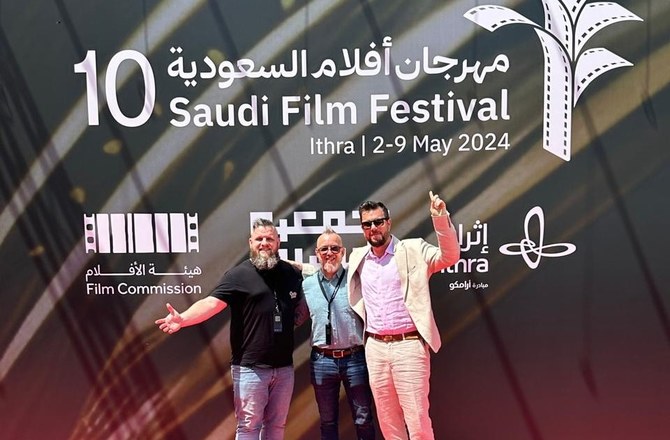
DHAHRAN: Saudi filmmakers of the future were given a masterclass in the latest animation techniques as part of the Saudi Film Festival this week.
The animation workshops were led by experts from the US as part of a collaboration between the festival and the American Chamber of Commerce and US Consulate in Dhahran.
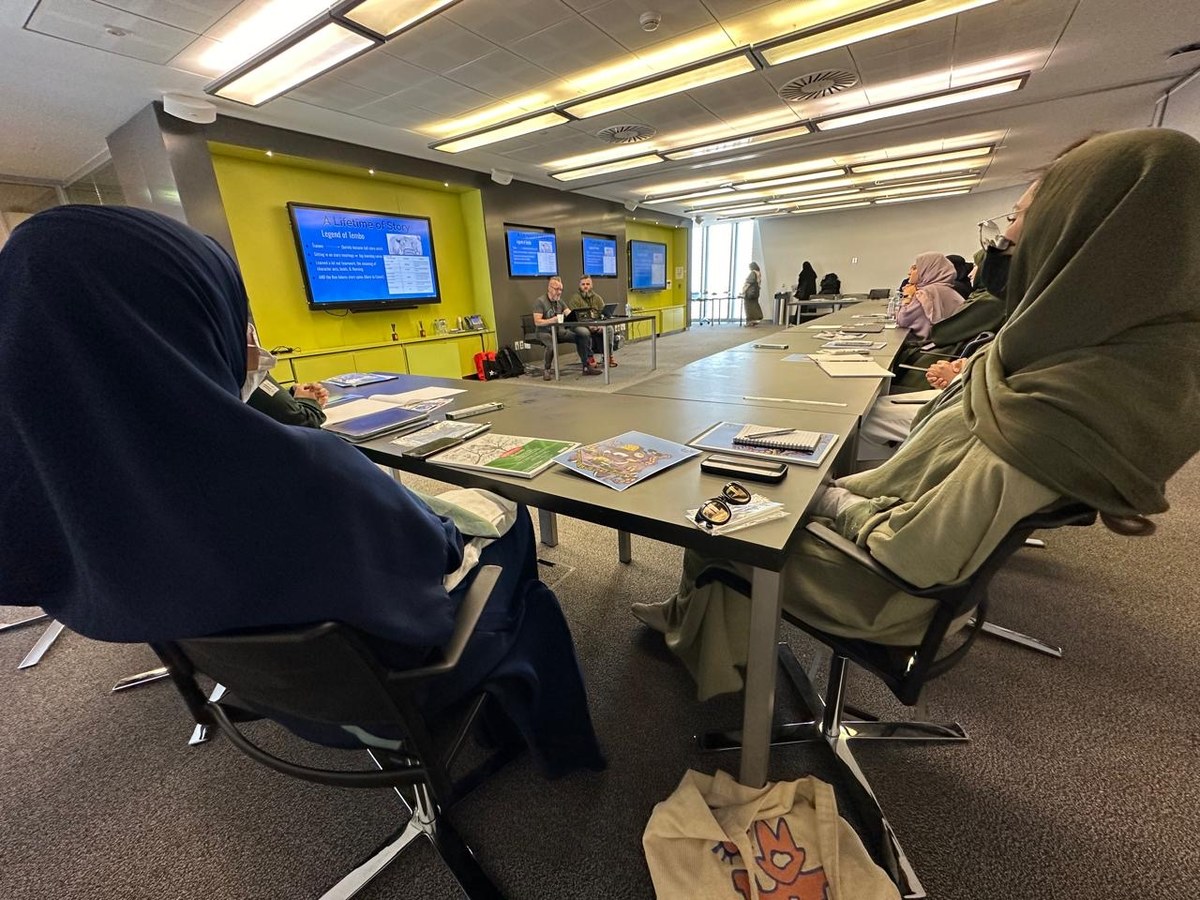
Todd Albert Nims, one of the pioneers in shaping the Saudi film industry over the past decade, told Arab News that with a population of 36 million, many under 35, Saudi Arabia is ripe with potential in the film sector.
Nims, an American who was born and raised in Dhahran, is now head of the AmCham Arts, Culture and Entertainment Committee, and has been involved in all aspects of Saudi-centered films, from acting to producing.
“I went to the first Saudi Film Festival in 2008 and worked with them on bringing the Saudi Film Festival into Ithra … I was there with them, and I’ve been here within this journey for the last 16 years,” he said.
Nims said that many Saudis grew up watching Disney films, and began their filmmaking efforts creating short content on YouTube.
He said there is huge potential for the Saudi market to grow, adding that he wanted to offer young filmmakers the opportunity to “gain expertise right in their backyard.”
Travis Blaise, who has over three decades of experience in animation, and has worked on Disney classics such as “Beauty and the Beast” and “The Lion King,” was on hand to conduct a five-day workshop.
“I was brought on to bring something new and unique to this Saudi Film Festival, which was bringing storytelling, or visual storytelling, to script,” he told Arab News.
Together with fellow American William Winkler, Blaise dedicated each day to bringing the overall picture to life, sketching ideas, developing the story structure, and even discuss the backstory of characters.
The goal was for each student to develop their own 30-second script. The workshop began with 11 students, but the figure soon ballooned to 20.
“Every single student was Saudi; most of them were women from several universities, while a couple were already professionals working in the industry,” Blaise said.
“I love the excitement and passion that they (the Saudi students) share because I have shared that same passion for the last 34 years, and the fact that I can bring something of my own experience to someone who is passionate and open-minded and willing to learn about film really is exciting,” he said.
The experts told Arab News that they are committed to building connections between the US and Saudi film industries, recognizing its potential to inspire, educate, and entertain audiences both domestically and internationally.
“Through filmmaking, we aim to strengthen ties between the US and Saudi Arabia by fostering mutual understanding and creative collaboration,” Alison Dilworth, the US deputy chief of mission, told Arab News.
British Council, Saudi Cinema Association working to ‘drive’ industry growth
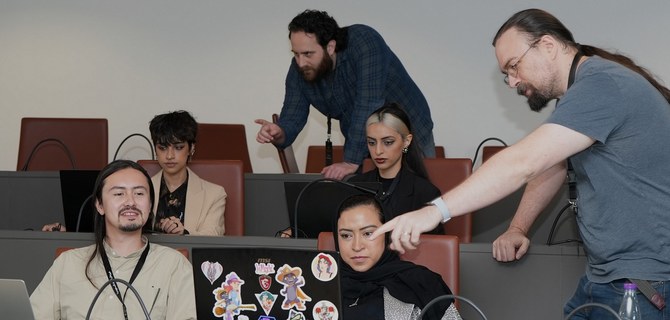
- Two organizations collaborated for 10th Saudi Film Festival
- Aim to find emerging talent and foster cultural exchange
DHAHRAN: The partnership between the British Council and the Saudi Cinema Association this week for the 10th edition of the Saudi Film Festival will help boost the industry, showcase emerging talent, and foster cultural exchange, say officials and creatives.
The event at the King Abdulaziz Center for World Culture, or Ithra, in Dhahran, began on May 2 and concludes on Thursday.
For the occasion, Studio Ulster and the SCA offered a training program to empower Saudi Arabia filmmakers with cutting-edge animation skills. The program commenced online and continued during the festival.
As part of the festival’s program, the British Council showcased a curated selection of UK short films, providing a platform for filmmakers to engage with Saudi Arabia audiences and forge meaningful connections.
Furthering this initiative was a series of masterclasses hosted by animation legends from Blue Zoo Productions, who offered insights into the nuances of building a thriving animation industry within the cultural framework of the country.
“We believe in the power of the arts to drive socio-economic development and are committed to fostering long-term partnerships that empower artists and enrich communities,” Amany Abouzeid, regional arts director of British Council MENA, said of the festival’s role in elevating the Kingdom’s Vision 2030 goals.
UK-based film producer Tony Humphreys, who came from London to attend the event, had high hopes for the week.
“I’m a producer and I’m also a consultant over here at the moment in the Saudi Film Festival to help try and link Saudi businesses and Saudi creatives with UK businesses and UK creatives,” Humphreys told Arab News.
The experience exceeded his expectations.
“I’ve met lots of very interesting people; lots of energy, lots of desire to do more and succeed creatively and lots of collaboration potential between our two nations,” he said.
“I’ve seen several of the programs, particularly the short film programs, I think there’s been a really interesting mix across all sorts of storytelling; some more traditional, some quite challenging in terms of themes and content. I think there’s a real vibe and a positive sort of drive of wanting to take the industry further very quickly.”
Ahmed Al-Mulla, who founded the SCA, said: “Our filmmakers were dreamers; they made their films underground and then went outside the country to screen them … Now, things changed in the blink of an eye.”




